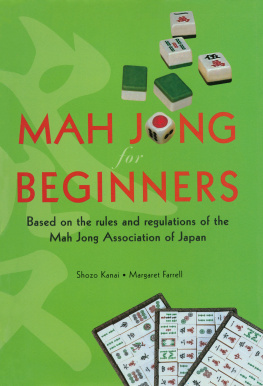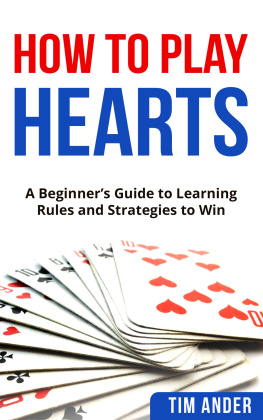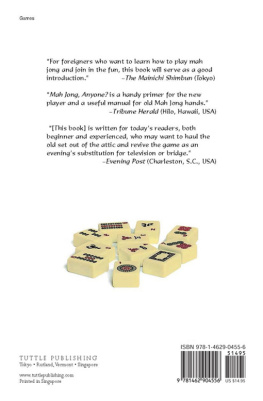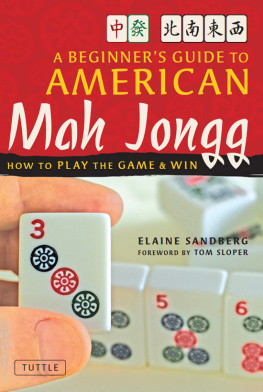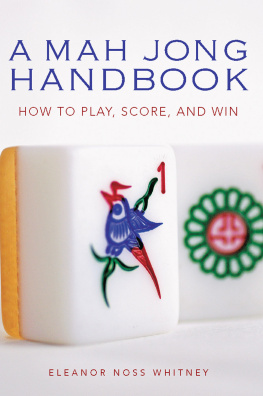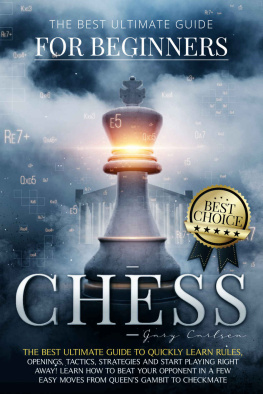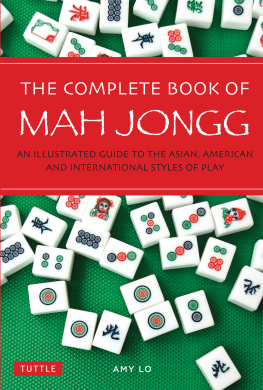CONTENTS
I. |
II. |
III. |
IV. |
V. |
VI. |
VII. |
VIII. |
IX. |
X. |
XI. |
XII. |
XIII. |
XIV. |
XV. |
XVI. |
I. |
II. |
III. |
IV. |
V. |
VI. |
VII. |
VIII. |
IX. |
X. |
Published by Periplus Editions (HK) Ltd.
An imprint of Tuttle Publishing
Copyright in Japan, 1952, 1955 by Charles E. Tuttle Co. Inc.
All rights reserved.
LCC Card No. 58-12108
ISBN 0-8048-0391-9
ISBN 978-1-4629-1687-0 (ebook)
First edition, 1952
Second (revised) edition, 1955
Forty-fourth printing, 2001
Printed in Singapore
Distributed by:
North America
Tuttle Publishing
Distribution Center, Airport Industrial Park
364 Innovation Drive
North Clarendon, VT 05759-9436
Tel: (802) 773 8930; Fax: (802) 773 6993
www.tuttlepublishing.com
Japan & Korea
Tuttle Publishing
Yaekari Building 3rd Floor, 5-4-12
Osaki Shinagawa-ku,
Tokyo 141-0032
Asia-Pacific
Berkeley Books Pte Ltd
61 Tai Seng Avenue, #02-12
Singapore 534167
Tel: (65) 6280 1330
Fax: (65) 6280 6290
Email:
Web site: www.periplus.com
Dedicated to
Mrs. M. Kanai
and
A. E. Farrell
CHAPTER I.
HISTORY OF MAH JONG
Man Jong is the national game of China. It is sometimes called the Chinese Game of the Four Winds.
There are many theories about its origin but none of them is valid or reliable. It is believed that it originated from one form of card playing and during the first stage had 40 pieces, called Pai (pronounced pie, rhymes with lye), (in English usually called tiles, the term used in this book) which were entirely different from those of today.
Down to the 17th Century the number of tiles increased to 108. These had the portraits of the 108 Brigands of a then-famous novel.
As time elapsed the number of tiles increased until there were more than 160, having many kinds of Bonus tiles, including Flower tiles. Revolutionists appeared and cut down the number to make the game more interesting. Rules and regulations were then decided and have remained the same until the present day. The Flower tiles that we now find in the set of Mah Jong are the remains of pre-revolutionary days.
Mah Jong was imported to Japan in 1907 for the first time, and received a high reputation towards 1929. There were many Mah Jong Clubs in every urban center and competitive games were held between Japan and China. After the out-break of the Sino-Japanese War, Mah Jong was suppressed in due course, but on finishing the war it again caught the public fancy, multiplying by many times its former popularity.
CHAPTER X.
MAXIMUM LIMIT OF POINTS
There are many Bonuses and points which are multiplied very often so that sometimes the total points increase to some five hundred thousand, or a million.
When one gets such points, or when one must pay such points, the game becomes uninteresting. Therefore a limit is set.
By Bonus Regulations, a limit of 3000 points is set for the Eldest Hand, or East, and a limit of 2000 points for the other players.
However, there are some hands which can get the maximum points even though the actual counting points do not amount to the limit of 2000 or 3000.
The Eldest Hand, or East, takes 14 tiles at first. If he can Go Out with these tiles he gets .............. max. pts.
This is called, "The Going Out of the Gods".
2. When South, West, or North Goes Out by taking the first tile discarded by East, he gets .....................max. pts.
Going Out by using the three kinds of Color, or Dragon tiles ..............................................................max. pts.
Pon ( s ) of the dragon tiles are needed.

Three Pon (s) of three Dragon tiles
Four Pon (s) of four Wind tiles
4. Going Out by using the 4 Pon (s) of the 4 Winds............................................................................ max. pts.
3 Wind Pon (s) and a Pillow of Wind tiles also gives .................................................................. max. pts.

All 1-s and 9-s
5. Going Out with a hand in which all the Pon (s) and the Pillow are 1-s and 9-s .................................max. pts.

Letter tiles only
Four Concealed Pon(s)
6. Going Out with a hand composed of Letter tiles only ...................................... max. pts.
(Letter tiles are Wind and Color tiles).
7. Going Out with 4 concealed Pon (s) ............max. pts.
Melded Pon (s) or Kan (s) are not allowed.
(3 concealed Pon(s) doubles the F. P. - see "Pon in Hand" in paragraph 2. COUNTING THE POINTS).
8. Going Out with 3 Kan (s), either melded or concealed, is sometimes allowed the maximum points, but usually this hand is limited to.............................................F. P. x 2
9. Going Out with 4 Kan (s) in the hand ......... max. pts.
Kan (s) are difficult to make, but if more than one player can make 4 Kan (s), the game is over and no count is allowed.

Pon (s) of 1-s and 9-s plus a Sequence
10. Going Out with a hand composed of one Pon of 1-s and one Pon of 9-s plus a sequence of 2 - 3 - 4 - 5 - 6 - 7 - 8 - ............................................................... max. pts.
(The sequence may be any kind or all one kind of Numeral). When a player has 13 tiles arranged as above he has 9 chances to Go Out. Any Numeral from 1- to 9- will make a Pillow to Go Out. This hand must be concealed.

One of each of the four Wind tiles and three Dragon tiles, and one of each of the 1-s and 9-s of the three kinds of Numeral tiles
11. A hand that has one of each of the 4 Wind tiles and 3 Color tiles, and one of each of the 1-s and 9-s of the 3 kinds of Numeral tiles, has 13 chances to Go Out by drawing any one of those tiles to make up a Pillow .....................max. pts.
Usually this hand has a Pillow and only waits for the missing 14th.
12. When the Eldest Hand, or East, Goes Out, that player remains the Eldest Hand for another game. In case the Eldest Hand should Go Out 8 successive times, he will receive the maximum points on the 9th game, even though the Fundamental Points are only 22, with no multiplication.
CHAPTER XI. NO WINNING
No Winning is called Pin-Chui . There are four cases.

